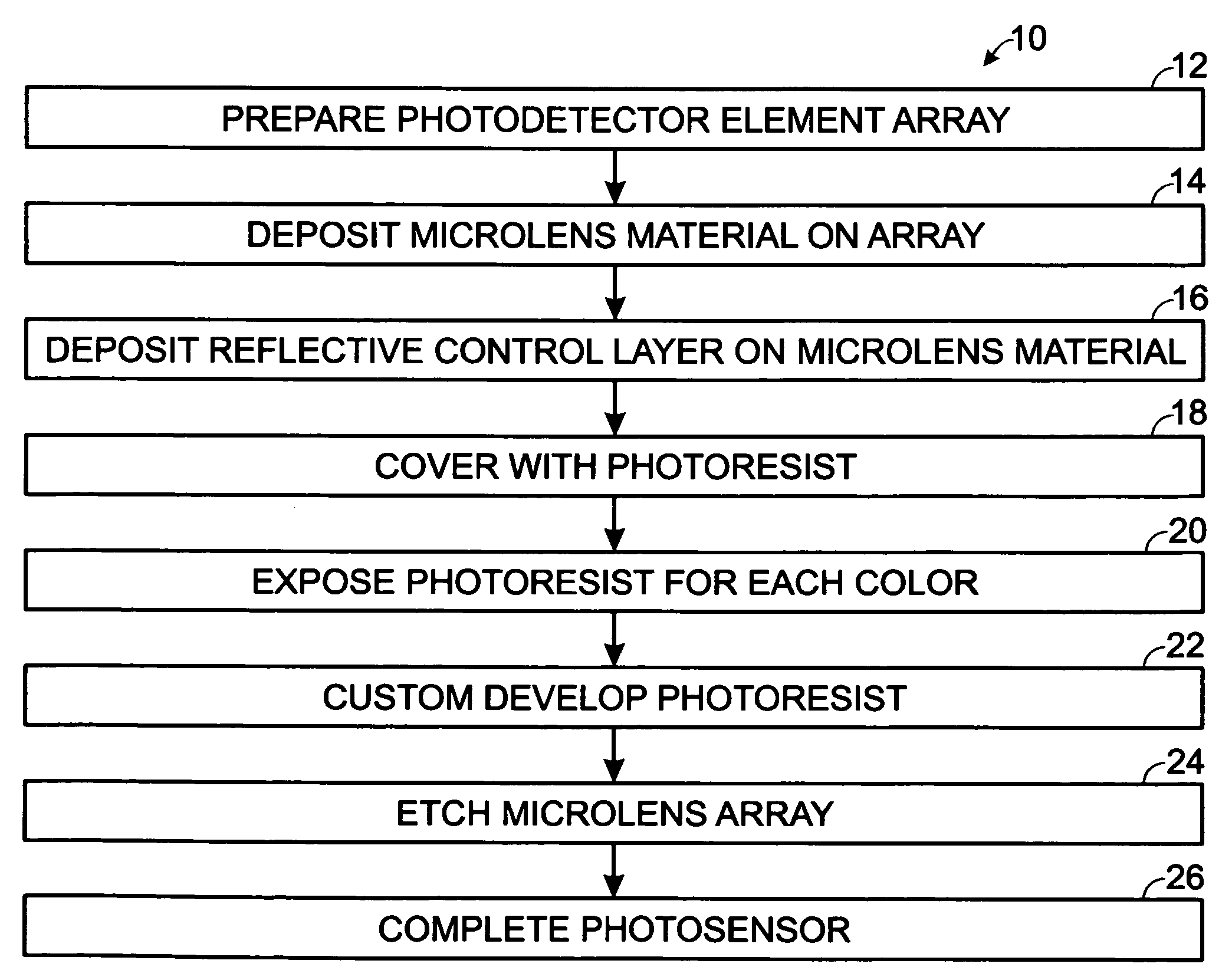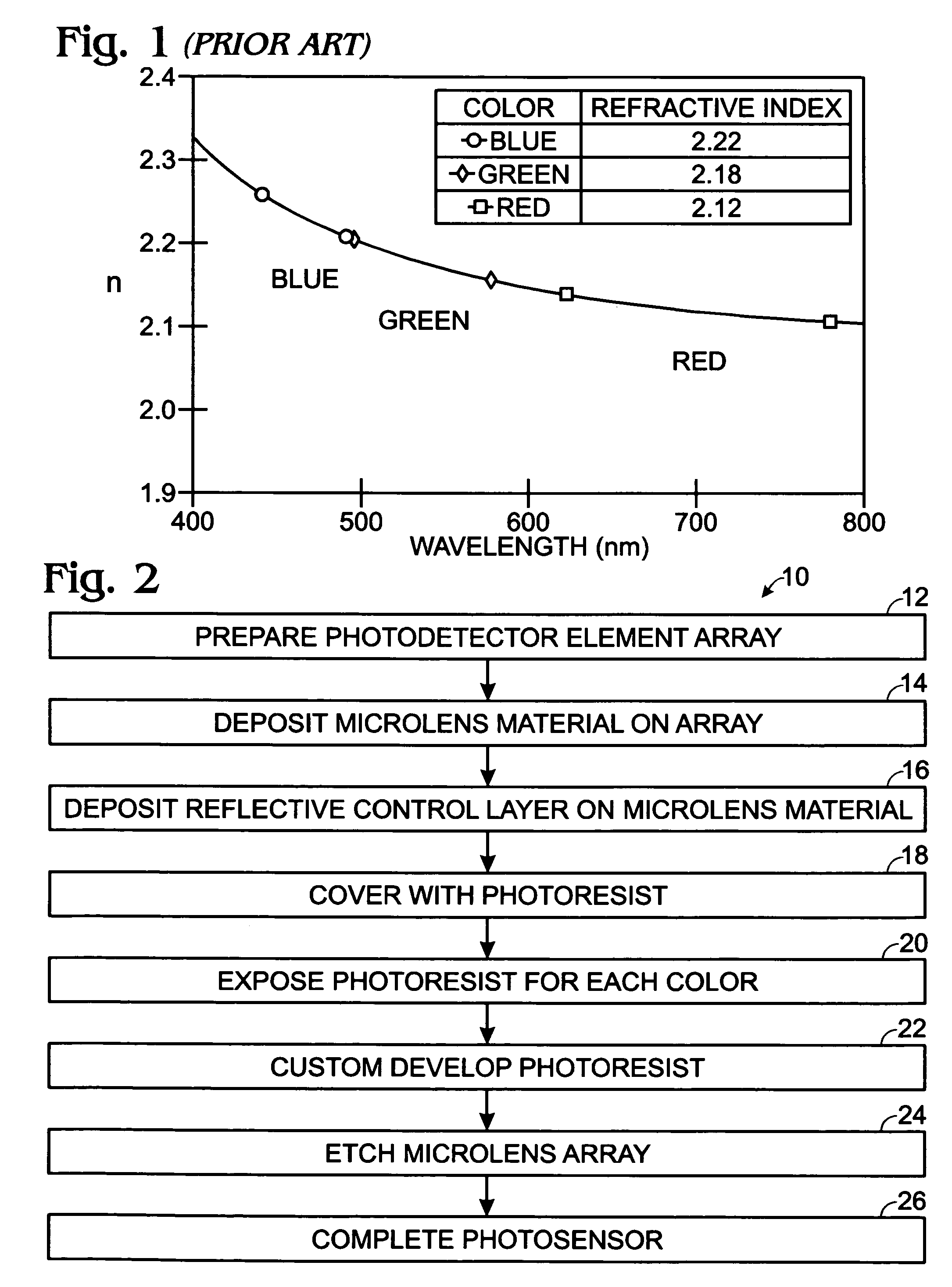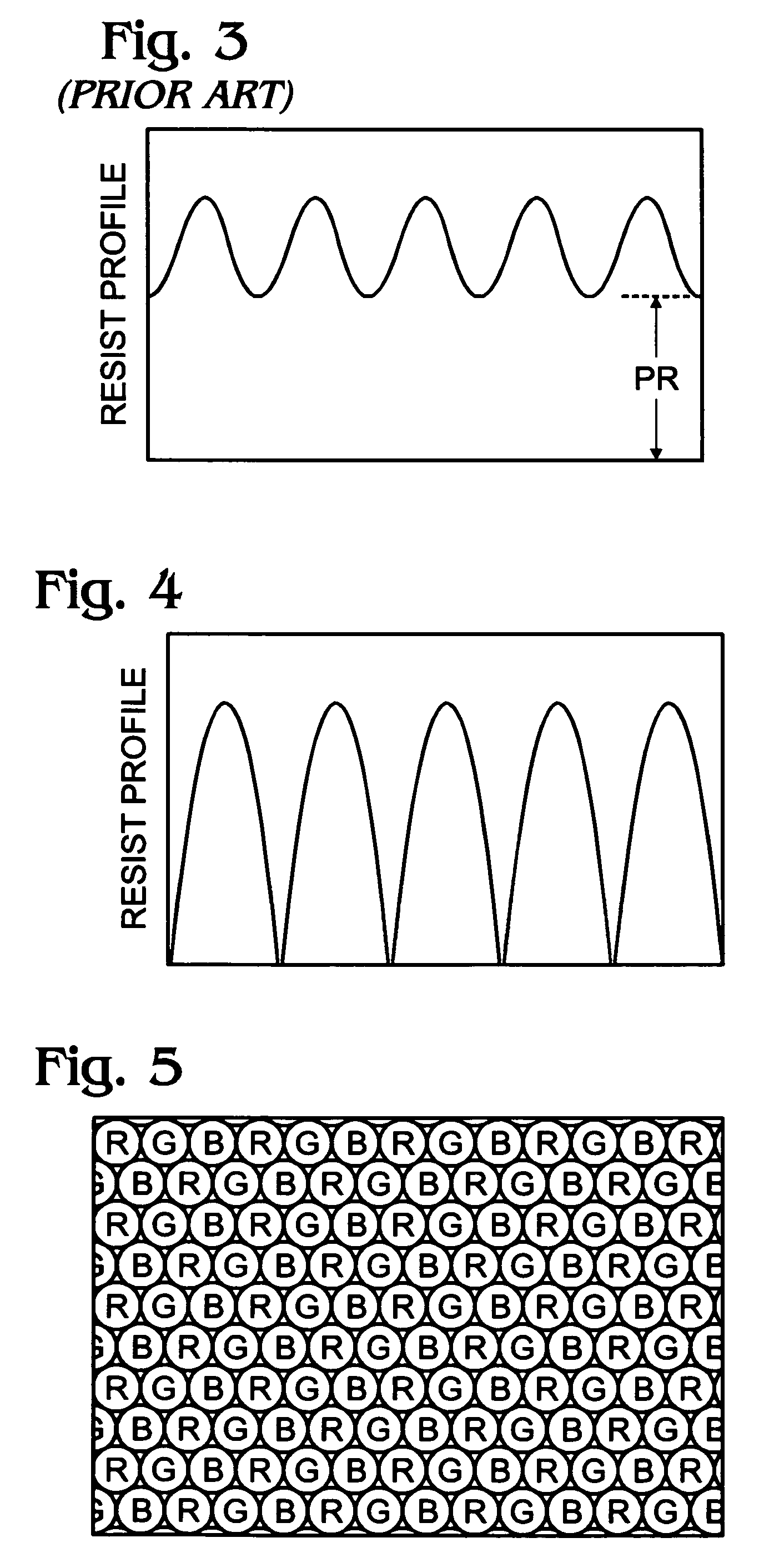Step-over lithography to produce parabolic photoresist profiles for microlens formation
a technology of parabolic photoresist and microlens, applied in the field of image sensing devices, can solve the problems of repeatability and aberration of lens shapes, and the optimum design of one color may not be quite right for another color, so as to improve reproducibility and accuracy, the effect of improving the shap
- Summary
- Abstract
- Description
- Claims
- Application Information
AI Technical Summary
Benefits of technology
Problems solved by technology
Method used
Image
Examples
Embodiment Construction
[0023]A method is disclosed to generate improved shapes in photoresist having better reproducibility and accuracy using photolithographic techniques with parameters that can be programmed into a stepper. This also allows customized shapes for the lens for each color of a color domain, thereby optimizing the focal point for, e.g., blue, green, and red photons, independent of each other.
[0024]The objective of the invention is to produce convex lens shapes in a high refractive index material for the purpose of concentrating photons impinging on the surface of a film onto the active photodectector element. This method offers the advantage of better reproducibility and possibly simpler processing sequences. The dimensions of the lens can be made extremely small, offering scalability to approximately a one-micron diameter. Both convex and concave shapes can be generated in the photoresist, which is then transferred to underlying material through appropriately developed dry etch processes....
PUM
| Property | Measurement | Unit |
|---|---|---|
| refractive index | aaaaa | aaaaa |
| refractive index | aaaaa | aaaaa |
| refractive index | aaaaa | aaaaa |
Abstract
Description
Claims
Application Information
 Login to View More
Login to View More - R&D
- Intellectual Property
- Life Sciences
- Materials
- Tech Scout
- Unparalleled Data Quality
- Higher Quality Content
- 60% Fewer Hallucinations
Browse by: Latest US Patents, China's latest patents, Technical Efficacy Thesaurus, Application Domain, Technology Topic, Popular Technical Reports.
© 2025 PatSnap. All rights reserved.Legal|Privacy policy|Modern Slavery Act Transparency Statement|Sitemap|About US| Contact US: help@patsnap.com



